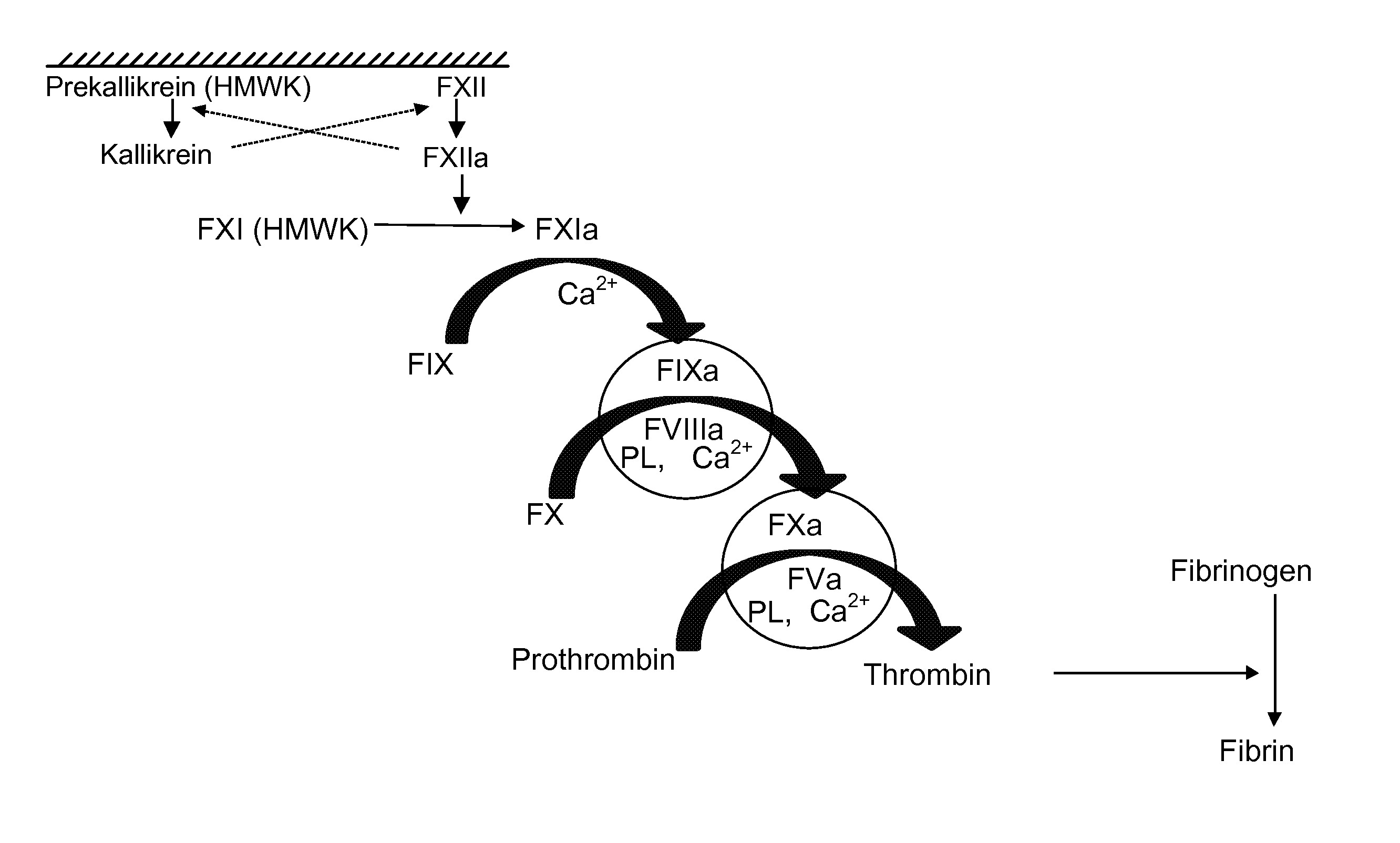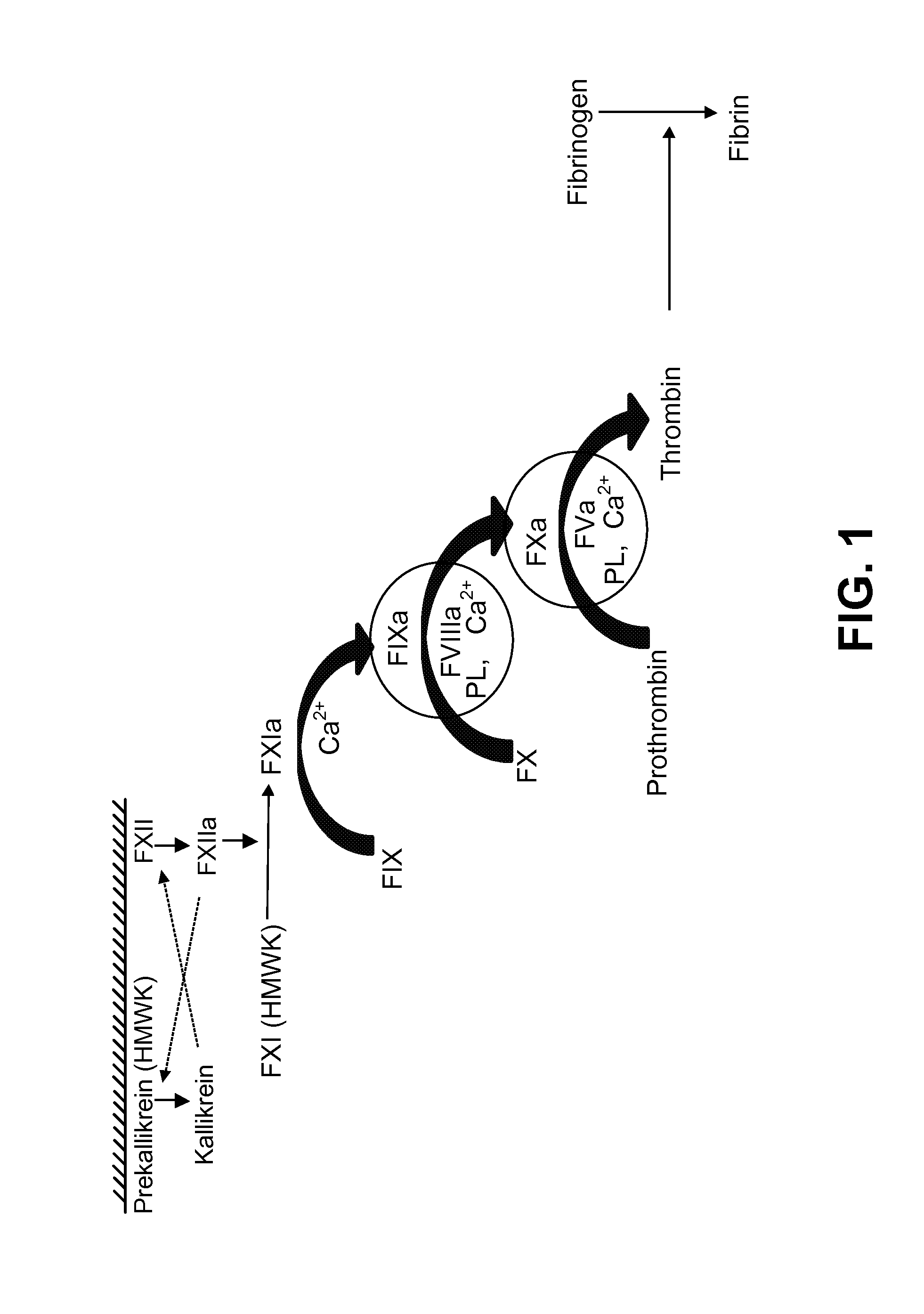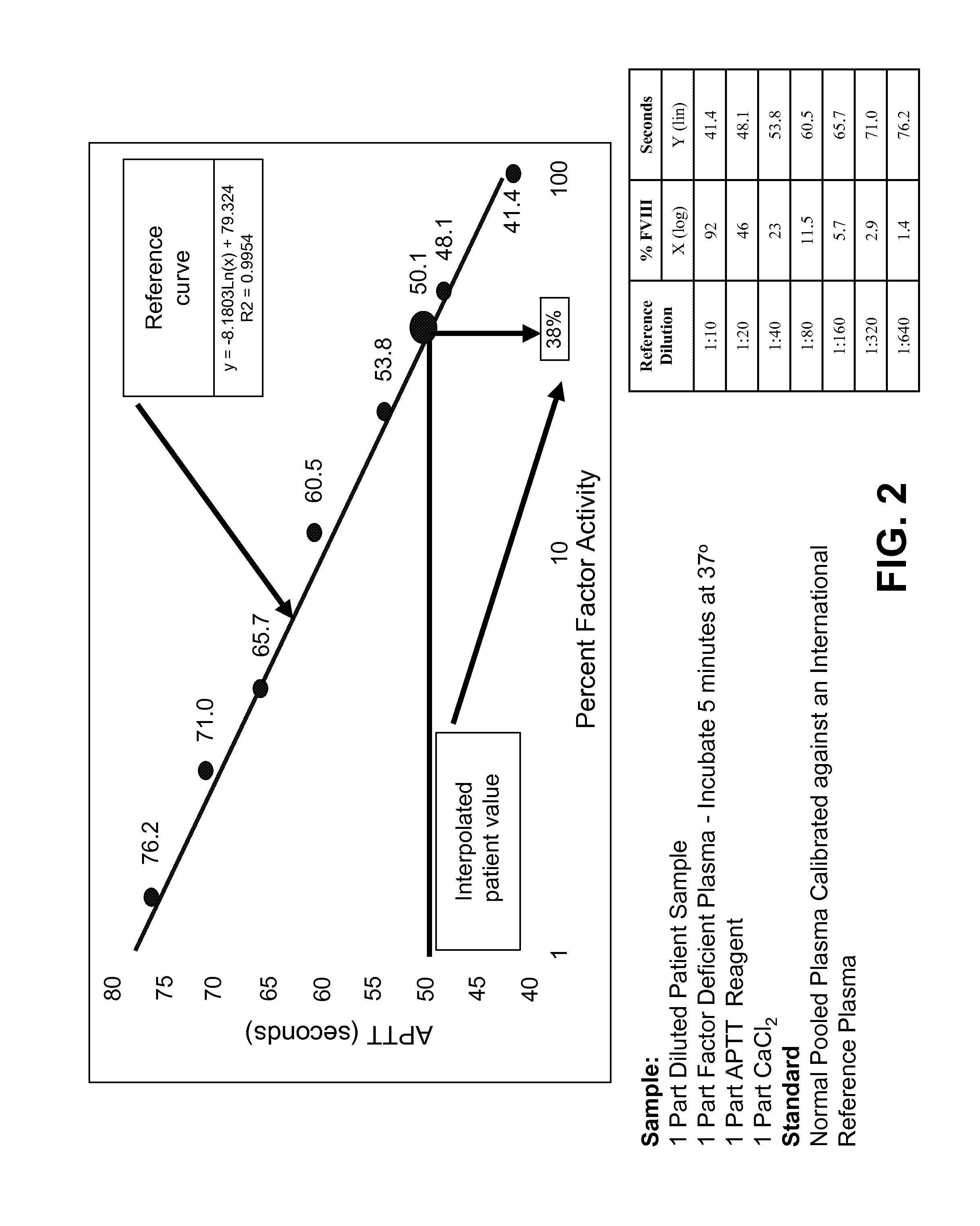Blood Factor Monitoring Assay and Uses Thereof
a blood factor and assay technology, applied in the field of hemostatic disorders, can solve the problems of reducing in vivo and in vitro blood clotting activity, requiring extensive medical monitoring, and hemophilic arthropathy and irreversible joint damag
- Summary
- Abstract
- Description
- Claims
- Application Information
AI Technical Summary
Benefits of technology
Problems solved by technology
Method used
Image
Examples
example 1
Standard Factor Monitoring System (FMS) Assay
[0222]Both Standard FMS assays (Standard FMS Factor VIII assay and Standard FMS Factor IX assay) were initiated by the application of 12 μL of recalcified patient plasma directly to the test bed, a disposable test strip containing activated coagulation factor-phospholipid complex. On this test bed, utilizing linear log-log curve fitting of concentration versus clotting time, both Standard FMS assays performed well when an individual Hemophilia A or Hemophilia B donor plasma was spiked with either rFVIIIFc or rFIXFc, respectively (TABLE 1).
TABLE 1Application of Standard FMS Factor VIII and Factor IX assays to Hemophilia A and Hemophilia B Samples spiked with either rFVIIIFc or rFIXFc, respectively.Standard FMSStandard FMSFactor VIII AssayFactor IX AssayAssay Range (IU / dL)0.8-1000.2-100Accuracy (% Spike Recovery)+ / −10%+ / −10.1Precision (% CV)3.81.9
example 2
Sensitivity of the Standard FMS Assay to Individual Phenotypic Variability
[0223]The disclosed “Standard FMS” assay system utilized undiluted patient plasma, thus, it was more analogous to an aPTT assay than to the one-stage factor assay. In the laboratory aPTT assay, one part undiluted patient plasma is generally combined with equal parts of liquid aPTT reagent and of CaCl2 solution. In contrast, in the one-stage assay, one part diluted (1:5) patient plasma is generally combined with one part factor deficient plasma, one part aPTT reagent, and one part CaCl2. Because of this dilution of patient plasma with factor deficient plasma, the one stage factor assay largely masks inter-subject variability that can occur as a result of variable levels of non-target coagulation factors (TABLE 2).
TABLE 2Hemophilia Donor Phenotypic VariabilityVIII Deficient Plasma SamplesSamplePT (sec) APTT (sec) Fib. (mg / dL)% II% V% VII% VIII% IX% X% XI% XIIHRF 11P2F811.1104.8293858680861077985HRF 11P3F811.2>40...
example 3
Alternate FMS Assay
[0226]To eliminate the observed phenotypic variability, several modifications to the Standard FMS methodology were investigated. Substitution of less sensitive phospholipid blends was able to reduce phenotypic variability. Adding a variety of purified coagulation factors, e.g., Factors II, VII, VIII, IX, X, XI, XII, XII, fibrinogen, vWF and Tissue Factor, and inhibitors, e.g., CTI, aprotinin. ε-aminocaproic acid (EACA), D-Phenylalanyl-1-prolyl-1-arginine chloromethyl ketone-Factor VIIa (FPRCK-FVIIa), or anti-FVIII monoclonal antibodies, also was able to reduce phenotypic variability.
[0227]A variant of the Standard FMS was developed. This variant, referred to as the “Alternate FMS” assay throughout the instant disclosure was essentially designed as a hybrid between the “Standard FMS” assay and a one stage coagulation factor assay. The Alternate FMS assay also utilized an activation mixture comprising activated coagulation factor (FIXa or FXIa) combined with a phosp...
PUM
| Property | Measurement | Unit |
|---|---|---|
| concentration | aaaaa | aaaaa |
| coagulation time | aaaaa | aaaaa |
| composition | aaaaa | aaaaa |
Abstract
Description
Claims
Application Information
 Login to View More
Login to View More - R&D
- Intellectual Property
- Life Sciences
- Materials
- Tech Scout
- Unparalleled Data Quality
- Higher Quality Content
- 60% Fewer Hallucinations
Browse by: Latest US Patents, China's latest patents, Technical Efficacy Thesaurus, Application Domain, Technology Topic, Popular Technical Reports.
© 2025 PatSnap. All rights reserved.Legal|Privacy policy|Modern Slavery Act Transparency Statement|Sitemap|About US| Contact US: help@patsnap.com



